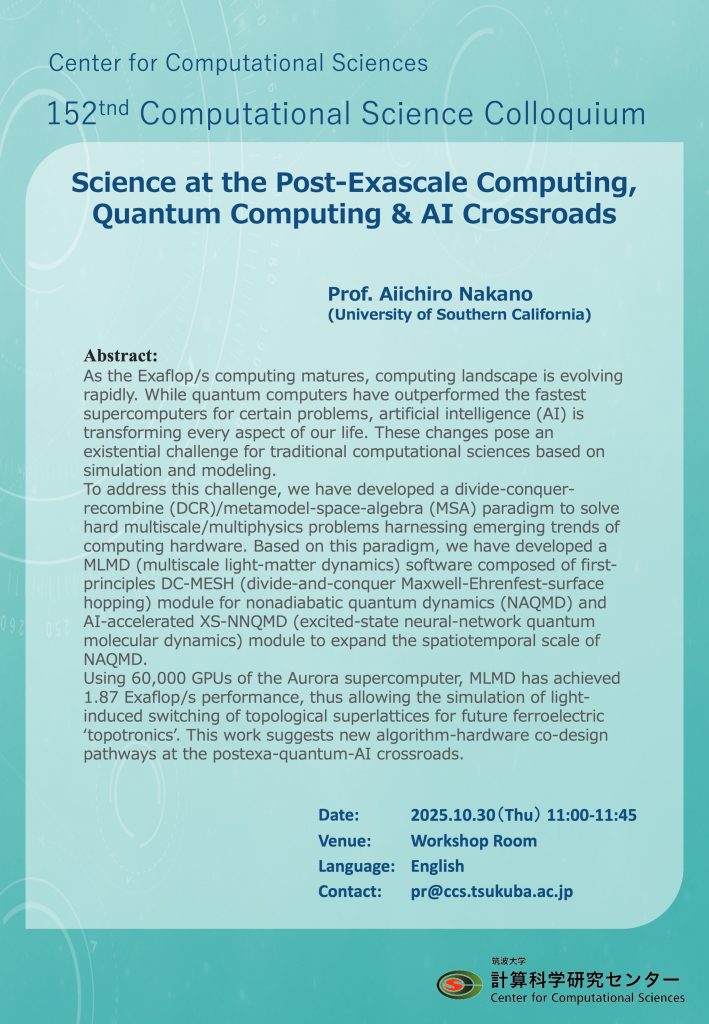152nd Colloquium
Presenter: Prof. Aiichiro Nakano (University of Southern California)
Date: 10/30 (11:00-11:45)
Venue: Workshop room, CCS
Language: English
Language: English
Title: Science at the Post-Exascale Computing, Quantum Computing & AI Crossroads
Abstract: As the Exaflop/s computing matures, computing landscape is evolving rapidly. While quantum computers have outperformed the fastest supercomputers for certain problems, artificial intelligence (AI) is transforming every aspect of our life. These changes pose an existential challenge for traditional computational sciences based on simulation and modeling.
To address this challenge, we have developed a divide-conquer-recombine (DCR)/metamodel-space-algebra (MSA) paradigm to solve hard multiscale/multiphysics problems harnessing emerging trends of computing hardware. Based on this paradigm, we have developed a MLMD (multiscale light-matter dynamics) software composed of first-principles DC-MESH (divide-and-conquer Maxwell-Ehrenfest-surface hopping) module for nonadiabatic quantum dynamics (NAQMD) and AI-accelerated XS-NNQMD (excited-state neural-network quantum molecular dynamics) module to expand the spatiotemporal scale of NAQMD.
Using 60,000 GPUs of the Aurora supercomputer, MLMD has achieved 1.87 Exaflop/s performance, thus allowing the simulation of light-induced switching of topological superlattices for future ferroelectric ‘topotronics’. This work suggests new algorithm-hardware co-design pathways at the postexa-quantum-AI crossroads.
Abstract: As the Exaflop/s computing matures, computing landscape is evolving rapidly. While quantum computers have outperformed the fastest supercomputers for certain problems, artificial intelligence (AI) is transforming every aspect of our life. These changes pose an existential challenge for traditional computational sciences based on simulation and modeling.
To address this challenge, we have developed a divide-conquer-recombine (DCR)/metamodel-space-algebra (MSA) paradigm to solve hard multiscale/multiphysics problems harnessing emerging trends of computing hardware. Based on this paradigm, we have developed a MLMD (multiscale light-matter dynamics) software composed of first-principles DC-MESH (divide-and-conquer Maxwell-Ehrenfest-surface hopping) module for nonadiabatic quantum dynamics (NAQMD) and AI-accelerated XS-NNQMD (excited-state neural-network quantum molecular dynamics) module to expand the spatiotemporal scale of NAQMD.
Using 60,000 GPUs of the Aurora supercomputer, MLMD has achieved 1.87 Exaflop/s performance, thus allowing the simulation of light-induced switching of topological superlattices for future ferroelectric ‘topotronics’. This work suggests new algorithm-hardware co-design pathways at the postexa-quantum-AI crossroads.

Coordinator: OTANI Minoru
